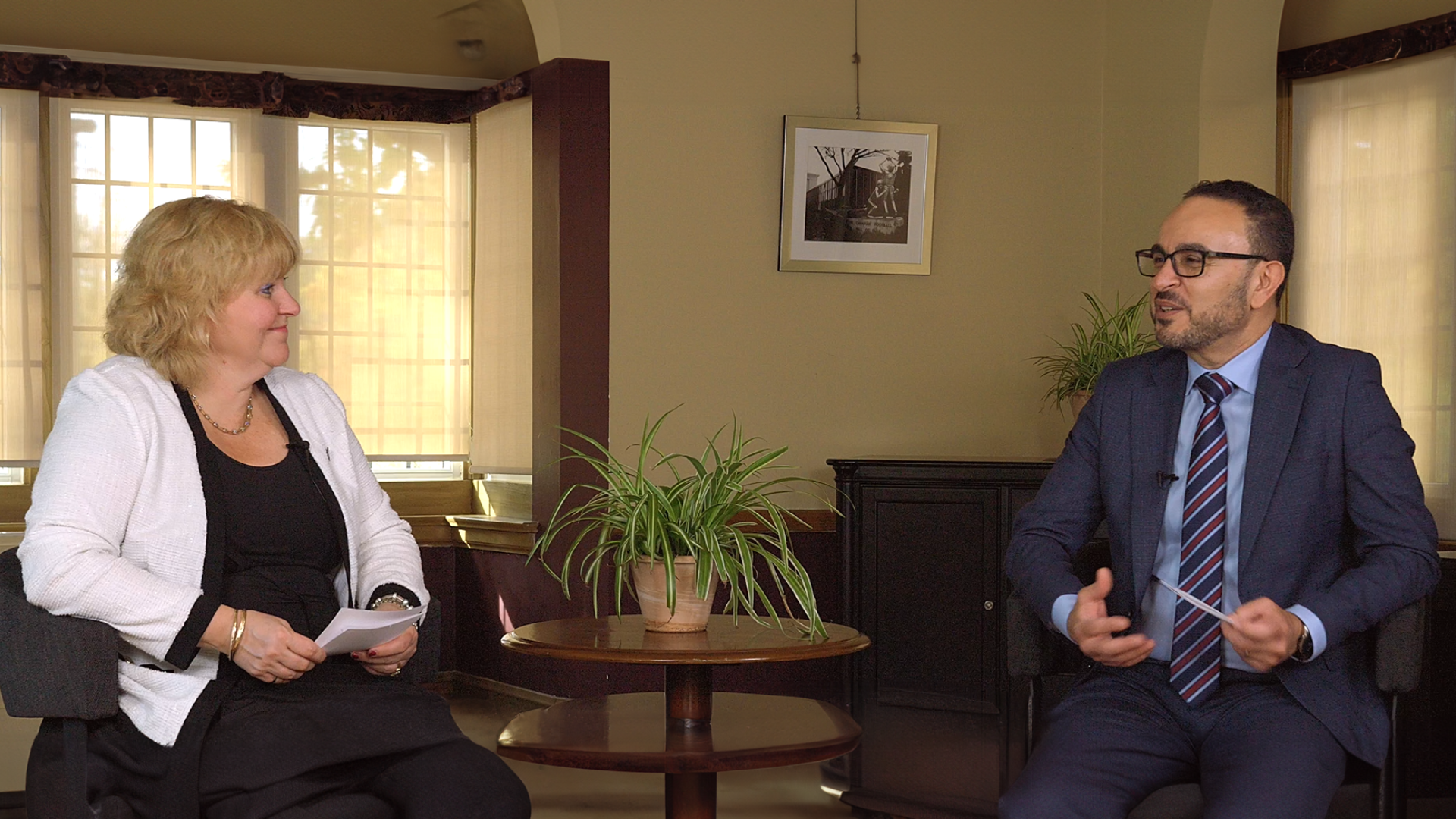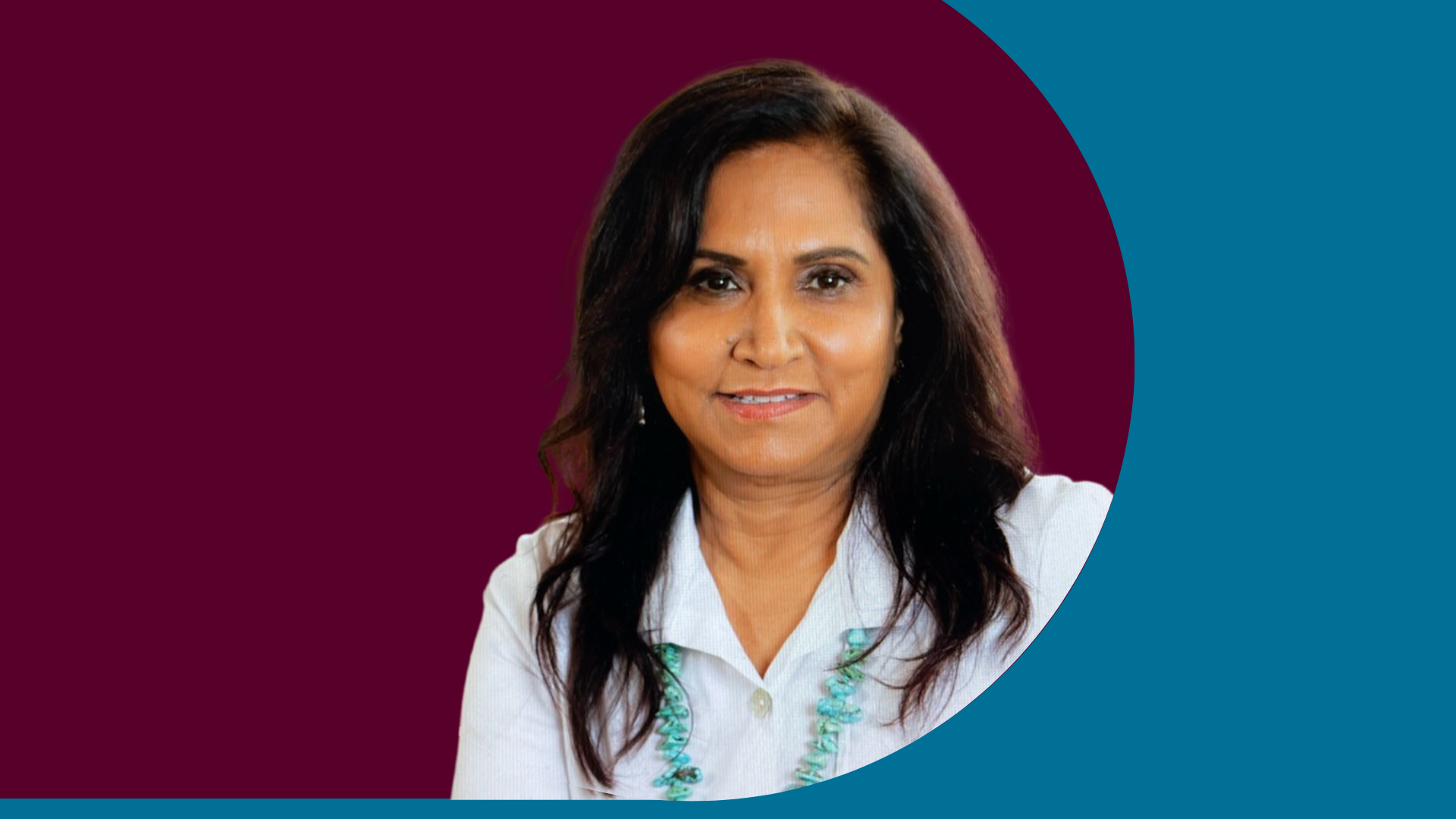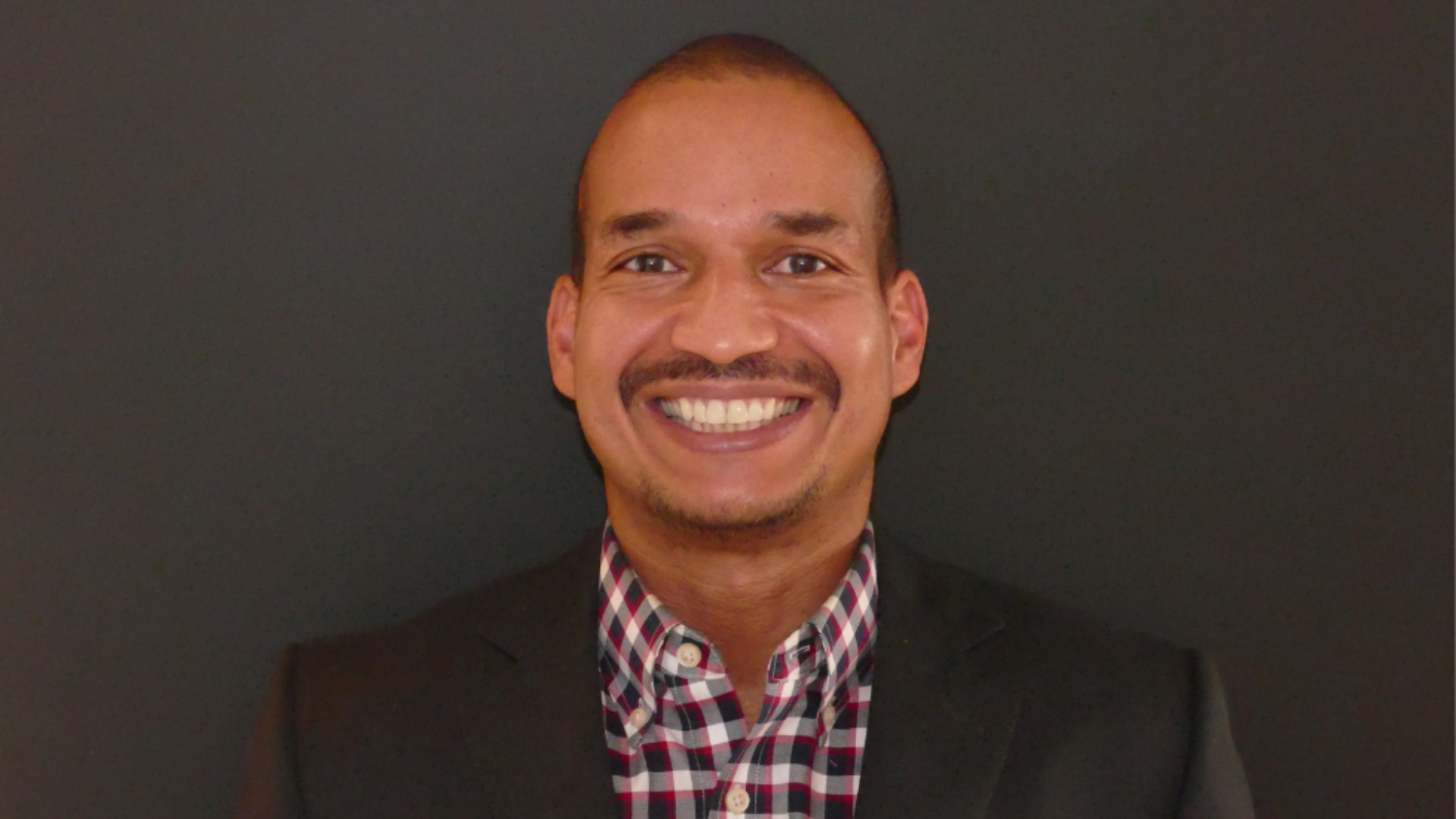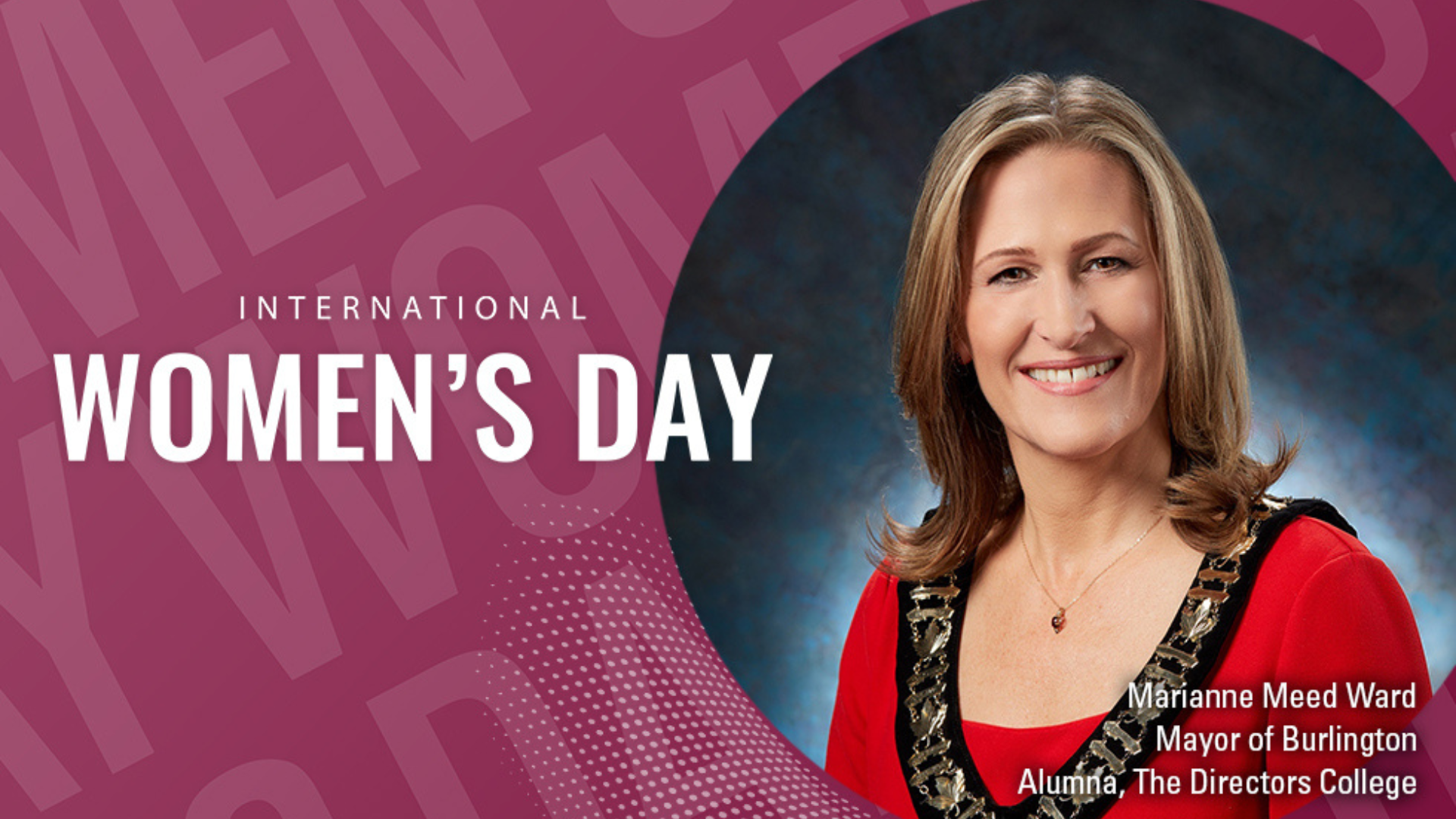ALUMNI STRATEGIC PLAN | TEACHING AND LEARNING
Combining the power of data with governance education
November 8, 2024 ·
Contributed by: Izabela Shubair, DeGroote Contributor

For years, Maryam Haghighi has been on a mission to harness the power of data to drive meaningful change in society. This pursuit has taken Haghighi from academia and analytics roles within the federal government to Fortune 100 companies. As Director of Enterprise Data Science and Insights at the Bank of Canada, Haghighi is now leading the institution’s strategic vision for advanced analytics and emerging technologies.
Recently, Haghighi’s mission steered her back to academia, this time as a student in the Chartered Director (C.Dir.) program. When she graduated in early November, Haghighi received the Directors College Gil Bennett Gold Standard Award.
“I’ve always been drawn to the power of numbers, logic and how data can unlock insights that lead to impactful decisions,” says Haghighi, who was recognized for her dedication to raising the bar of professional standards in corporate governance through her progress in the Chartered Director program. “My career has been a journey of interdisciplinary innovation and blending deep technical expertise with strategic leadership.”
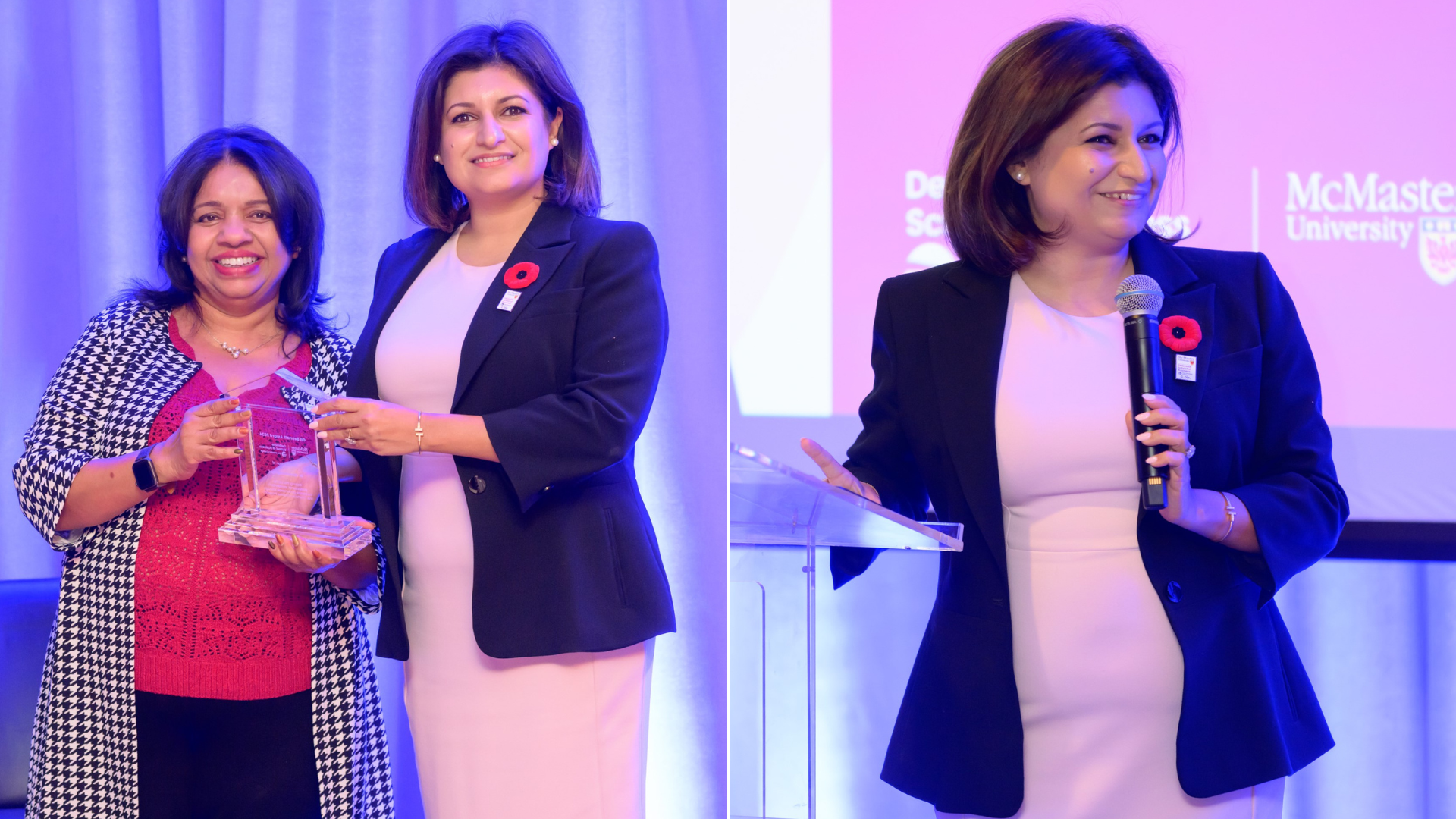
An analytical career trajectory
Long before Haghighi was leading the Bank of Canada’s efforts to embed advanced analytics and emerging technologies into its work, she received her PhD in mathematics. She credits her education with harnessing her passion for analytics and data, which she combined with a critical thinking foundation she gained from her father.
“Today, I draw inspiration from leaders who are bold enough to push the boundaries of what’s possible while maintaining a strong sense of responsibility to society and also seeing my teams tackle complex problems with creativity and dedication,” she says. “But my original inspiration has been my father, who established in me the love of reaching, this joy of asking questions to get to the essence of a topic.”
Over the years, Haghighi worked on high-profile data initiatives for the federal government that resulted in the creation of thousands of jobs. She shaped global policies while representing Canada on international advisory panels under the United Nations. And she took on leading technical roles within multibillion-dollar projects in the private sector. Throughout it all, Haghighi’s foundation, passion and conviction in driving transformation prepared her for the challenges she faced. The biggest of these, she says, has been the risk-averse nature of organizations.
“Sometimes, it can be a struggle to get buy-in and convince others that what I’m seeing is going to happen and that it is worth preparing for,” she shares. “The Bank of Canada has been a bright spot in my career in that aspect because of its key value to think ahead.”
However, Haghighi admits that when she initially introduced data science and AI at the Bank, there was skepticism about how these technologies would fit in with a central bank’s traditional work. Overcoming the doubt required technical expertise, communication and stakeholder engagement to demonstrate the value of these tools through tangible results.
“When I joined the Bank, I focused on developing and nurturing a culture of data-driven decision-making,” she says. “We introduced pilot projects demonstrating the tangible benefits of using advanced analytics in areas such as forecasting and risk management. Simultaneously, we laid the groundwork for emerging technologies, such as AI and the Bank’s quantum strategy. This is all to position the Bank to increase its resiliency and leverage these emerging technologies to balance risk and innovation. Of course, change management was also key.”
One of those tangible results is the Bank’s Data Science Hub, which Haghighi built from the ground up in her previous role as the institution’s first Director of Data Science. This hub established a foundational pillar for the Bank’s digital transformation. She was also the principal architect behind the Bank’s Quantum Strategy, the first for any central bank globally.
The role of governance education
By working with senior Bank leadership, Haghighi ensured alignment with the bank’s vision and balanced innovation with a rigorous risk management and governance framework. That’s where governance education came in. Haghighi says she realized formal education in governance would provide her with a comprehensive overview of board dynamics, fiduciary duties, risk oversight and ethical governance.
“Good governance is about balancing innovation and critical thinking with accountability,” she says. “It’s crucial that boards understand emerging risks, particularly as a result of technologies, so that they can make informed decisions about risks and opportunities because they are two sides of the same coin. At the same time, boards and organizations must maintain a strong focus on transparency, ethical governance and inclusivity.”
Earning the C.Dir. designation, Haghighi says, has been invaluable in helping her gain a deeper understanding of priorities in her current leadership role. Already looking ahead, she says it will also be vital in her future board participation.
“I’m hoping to be able to use my designation to serve on boards of organizations that can benefit from my background and skills, sitting at that intersection of technology, policy and finance, where I can contribute my expertise to drive strategic growth and to mitigate risks,” she says.
Haghighi’s industry insights
Throughout her career, Haghighi has encountered numerous industry changes. She currently anticipates two significant shifts in the banking industry.
- Continued integration of emerging technologies: “AI or quantum computing within the system will revolutionize how we analyze data, how we analyze trends, how we manage risks.”
- Growing focus on data ethics and governance: “As data becomes more central to decision making, the responsibility to manage it ethically and transparently will become even more critical. Central banks, in particular, will need to lead the way in ensuring that technological innovation is combined with inclusivity and public trust.”
So, how can leaders prepare? Haghighi says anticipating the changes now is critical. She says leaders with enough foresight and information will be better equipped to strategize and guide the larger team to success.
“The ability to think strategically, or at least to do scenario planning exercises to think ahead and to think about risk mitigations are key to being a true leader,” Haghighi says.








